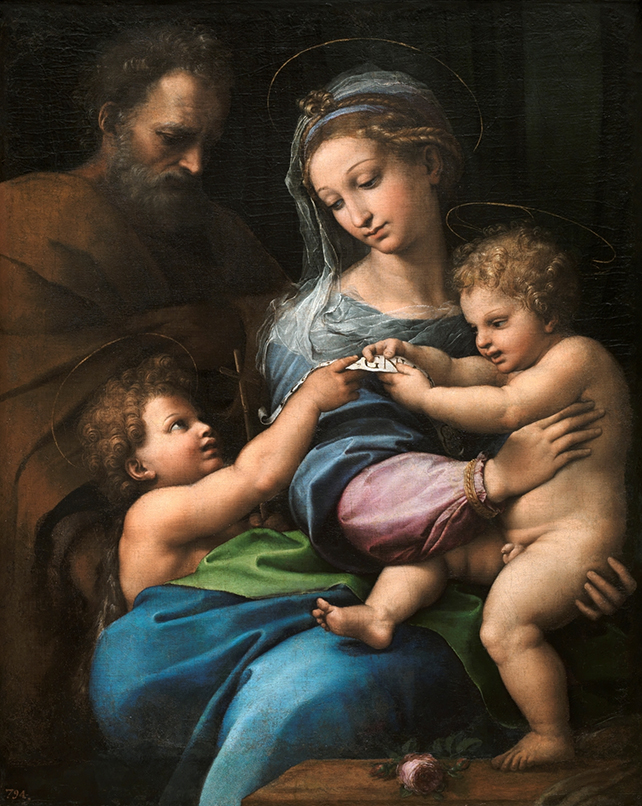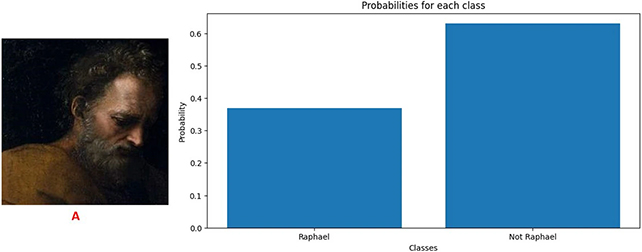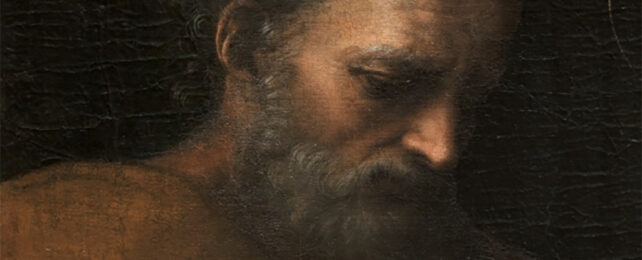Artificial intelligence (AI) can be trained to see details in images that escape the human eye. Now an AI neural network has identified something unusual about a face in a Raphael painting: it wasn't actually painted by Raphael.
The face in question belongs to St Joseph, seen in the top left of the painting known as the Madonna della Rosa (or Madonna of the Rose).
Scholars have in fact long debated whether or not the painting is a Raphael original. While it requires diverse evidence to conclude an artwork's provenance, a new method of analysis based on an AI algorithm has sided with those who think at least some of the strokes were at the hand of another artist.
Researchers from the UK and US developed a custom analysis algorithm based on the works that we know are the result of the Italian master's brushwork.

"Using deep feature analysis, we used pictures of authenticated Raphael paintings to train the computer to recognize his style to a very detailed degree, from the brushstrokes, the color palette, the shading and every aspect of the work," says mathematician and computer scientist Hassan Ugail from the University of Bradford in the UK.
"The computer sees far more deeply than the human eye, to microscopic level. "
Machine learning processes typically need to be trained on a vast pool of examples, something which isn't always available when it comes to a sole artist's life work. In this case, the team modified pre-trained architecture developed by Microscoft called ResNet50, coupled with a traditional machine learning technique called a Support Vector Machine.
The method has previously been shown to have a 98 percent accuracy level when it comes to identifying Raphael paintings. Usually, it's trained on whole pictures, but here the team also asked it to look at individual faces.
While the Madonna, the Child, and St John all show up as being created from the hand of Raphael, that's not the case of St Joseph. The researchers note that in previous debates over the painting's authenticity, St Joseph's face has been thought to be less well done than the others in the frame.

"When we tested the della Rosa as a whole, the results were not conclusive," says Ugail.
"So, then we tested the individual parts and while the rest of the picture was confirmed as Raphael, Joseph's face came up as most likely not Raphael."
Giulio Romano, one of Raphael's pupils, may have been responsible for the fourth face, but that's by no means certain. It's another example of modern technology revealing the secrets of classic paintings – this time with AI.
The Madonna della Rosa was painted on canvas in the years 1518 to 1520, experts think. It was in the mid-1800s that art critics started to suspect that Raphael might not have painted all of the artwork.
Now those suspicions have almost certainly been proved correct, though the research team behind the study is keen to emphasize that this AI will be helping out art experts in the future, rather than replacing them.
"This is not a case of AI taking people's jobs," says Ugail. "The process of authenticating a work of art involves looking at many aspects, from its provenance, pigments, condition of the work and so on.
"However, this sort of software can be used as one tool to assist in the process."
The research has been published in Heritage Science.
